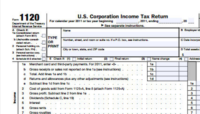After several years of annual declines in U.S. construction work, the 2012 construction forecasts, ranging from flat to slight increases in work, appear more promising. However, the ongoing credit crunch that plagues construction financing is still creating some uncertainty across the construction community.
Faced with the ongoing slow recovery, a growing number of construction businesses have realized more direct financial benefits through tax incentives. Commonly unknown or misunderstood, perhaps the most powerful tax incentive available to most constructors is the R&D (research and development) tax credit, which is applicable to many construction jobs. For the vast majority of constructors who have been unknowingly missing out, the time to capture full government-sponsored R&D tax credits is now.
What’s in a Name?
You are not alone in thinking that R&D tax credits could not possibly apply to constructors, or if there were an application, it would be limited to patentable equipment and inventions. Construction tax accountants across the country often encounter this first reaction. Despite the tax credit’s name, its qualification requirements are very clear and include many activities performed by construction firms every day.
Freeing your mind of traditional notions of R&D, the most important thing to understand is that the R&D tax credit applies to much more than inventions, and encompasses development of products, processes, techniques, formulas and computer software. Such developments can be new, but also just improvements. Whether new or improved, the developments can be application-specific, and work under contract does not necessarily mean the activities cannot qualify—even if the company is ultimately paid for them.
Sizable Benefits
Constructors often can qualify activities for tax credits that are aimed at developing the construction process for specific jobs or those intended to improve the overall process performance to increase efficiencies. Design-build services, LEED projects and value engineering are often the best candidates, but even some preconstruction planning and development of means and methods for plan-spec and hard-bid jobs qualify for the benefits. Since this incentive is an enticing dollar-for-dollar reduction in tax liability, even a small portion of activities that qualify can result in significant tax benefits.
One example is an $80-million general contractor providing traditional construction services in the educational, green, health-care, renovation, industrial, multi-unit, municipal, office, recreational and other market sectors. Some of its construction jobs did not include qualified R&D activities, but many jobs had portions that gave rise to R&D tax credits.


Post a comment to this article
Report Abusive Comment